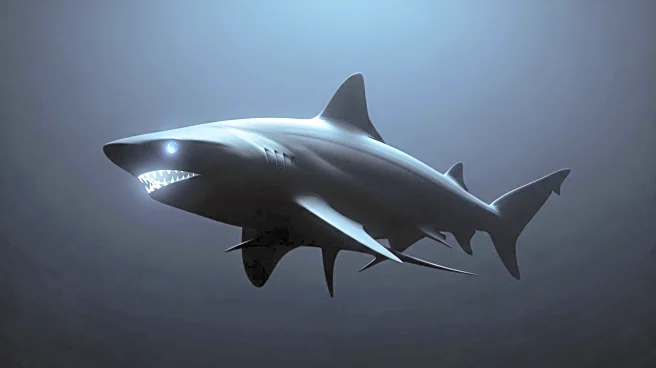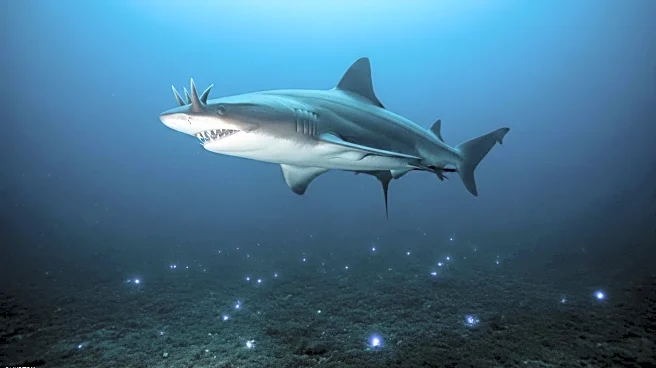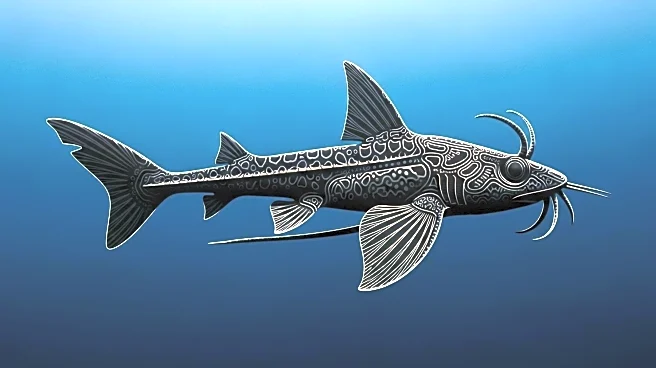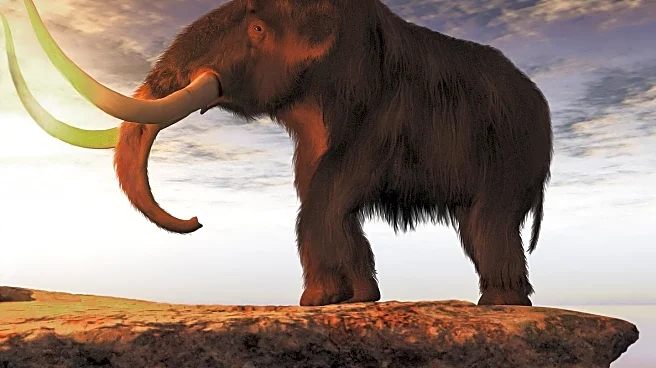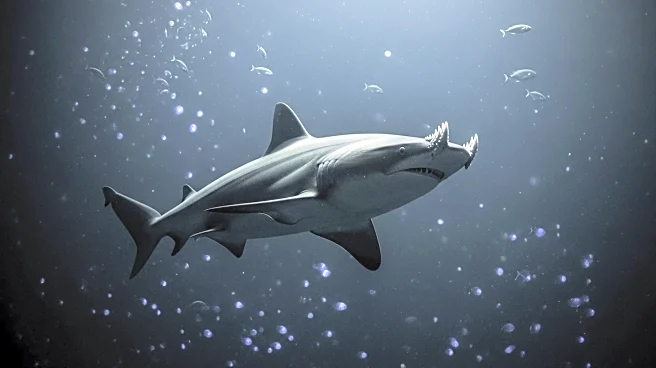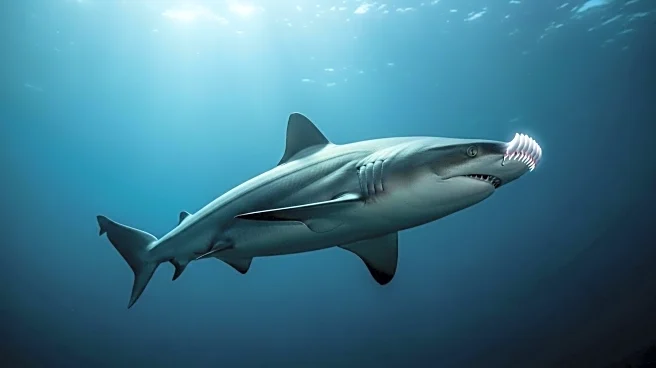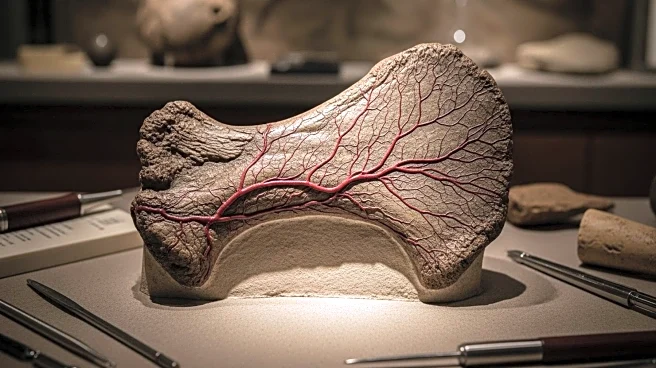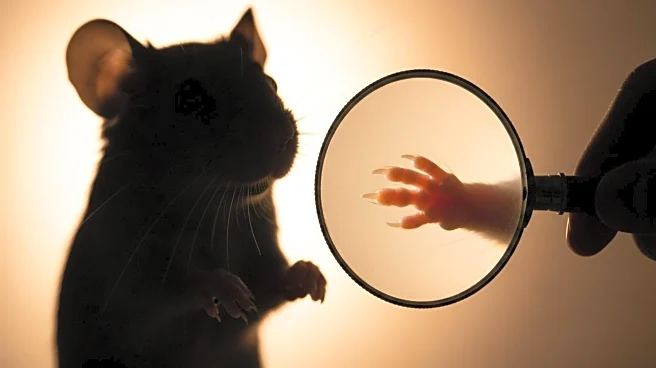What's Happening?
A recent study has revealed that male ghost sharks, also known as chimaeras, possess a unique appendage on their foreheads that grows real rows of teeth. This appendage, called a tenaculum, is used during mating to grasp females, similar to how sharks use their mouths. The research, conducted by scientists from the University of Florida, University of Washington, and University of Chicago, involved studying both fossils and living specimens. A 315-million-year-old fossil showed the tenaculum attached to the upper jaw with teeth resembling those found in the mouth. Modern chimaeras from Puget Sound exhibited the same tooth-growing process on their heads. Genetic testing confirmed that the tenaculum teeth express the same genes as oral teeth, indicating they are true teeth rather than tooth-like scales.
Why It's Important?
This discovery highlights the evolutionary flexibility and adaptability of species, demonstrating how existing biological structures can be repurposed for new functions. The presence of teeth outside the mouth in ghost sharks provides insights into the dynamics of tooth development and evolution. Understanding these processes can contribute to broader knowledge in evolutionary biology and may have implications for studying other species with unique adaptations. The findings also underscore the complexity of marine life and the potential for uncovering more unexpected biological phenomena in ocean depths.
What's Next?
The study opens avenues for further research into the genetic mechanisms behind tooth development in ghost sharks and other species. Scientists may explore whether similar evolutionary adaptations exist in other marine animals or if the tenaculum's tooth-growing ability can be replicated or manipulated in laboratory settings. Additionally, the findings could inspire new studies on the ecological roles and mating behaviors of chimaeras, potentially influencing conservation strategies for these deep-sea creatures.
Beyond the Headlines
The discovery of teeth on ghost shark foreheads raises questions about the ethical considerations of studying and potentially manipulating evolutionary traits. It also prompts discussions on the cultural significance of marine life adaptations and how they are perceived by society. The study exemplifies the intricate relationship between evolution and environmental pressures, offering a glimpse into the long-term shifts that can occur in species over millions of years.
